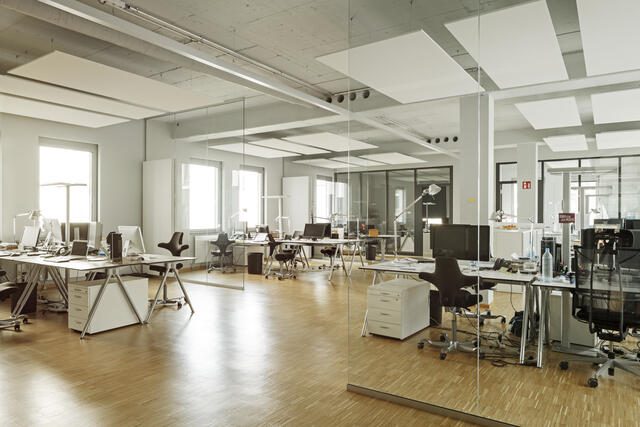In this blog series, we’ll be looking at four key areas your building organization needs to address when your tenants or occupants return to the workplace. We’ll also see how smart building technology can help you meet each challenge effectively. We’ll start with a broad perspective, then take a deeper dive on each topic in future posts.

In recent months, businesses and organizations of all kinds have been forced to keep employees at home, with their facilities left at low or no occupancy. The lockdown has put stress on families and the economy. In many regions, restrictions are now being relaxed by some degree, enabling many businesses to restart. Employees are eager to reunite and collaborate with colleagues, while regaining access to office-based tools and resources.
However, it won’t be business as usual. Under the ‘new normal’, organizations need to provide an indoor environment that is healthy and keeps people informed. At the same time, the business needs to be productive and sustainable, while operations are managed efficiently.
Return to Workplace: 4 areas of focus
In some cases, these may initially seem like competing goals. The key is to simultaneously keep the occupant experience, the business, and the operation in balance by applying the right technological tools. Let’s take a look at how this can work within four important areas of focus.
1. Occupant Well-Being
A smart application continuously collecting sensor data can be used to monitor the health of every zone of the indoor environment.
For example, humidity can be tracked to ensure optimal levels recommended by ASHRAE and the EPA. Adequate air circulation across the building can be confirmed, while CO2 and VoC levels are monitored where employees gather. This data can be fed into the building management system to adjust settings as necessary.
Tracking occupancy and under-desk sensor data can also be used to ensure cleaning crews clean the right places at the right time, while VoC monitoring can indirectly confirm cleaning has been adequate.
2. Space Management
Businesses need to comply with new safe distancing rules. At the same time, it’s important to adapt space so that people can work efficiently. Digitization can help.
Occupancy sensors can track how many people are in a given area, as well as what spaces are being used and how. Occupancy thresholds can be set and used to control access to floors, rooms, or common areas like a cafeteria. This can help avoid overcrowding and keep occupants distanced.
Usage pattern data on individual and collaborative spaces can also help office and facility managers optimize office layouts and adjust interim policies for use of specific areas.
3. Occupant Engagement
With employees or tenants no longer constantly in a building, it’s important that the building owner or facility management team have an effective way to communicate how space can be used.
Mobile apps can help keep everyone informed about company updates and information about workspace usage or changes. Employers can set up selective notifications based on roles or teams.
This same smart technology can also give occupants access to digital tools to, for example, find parking, reserve a meeting room, or learn about community events. There can also be tools to help people navigate the office under new policies, knowing where there is available space, and helping avoid areas that may currently be over-occupied, such as lineups in elevator lobbies.
4. Building Operational Efficiency
While people safety is a top priority, it’s also important to maintain building and operational efficiency. Once again, connected technology can help.
By analyzing target versus actual occupancy levels, setpoints for HVAC can be adjusted where needed to reduce energy consumption. Equipment analytics can compare HVAC performance against design specifications to verify proper operation, while airflow, pressure, temperature, and humidity are monitored to maintain a healthy work environment.
The efficiency of facility personnel can be improved by reducing the number of site visits. This can be accomplished in two ways. First, remote monitoring and automated fault detection can reduce the need for preventative maintenance checks. Next, monitoring and comparing the real world performance of HVAC equipment against a ‘digital twin’ will identify when and where intervention is required. Using remote root cause analysis and problem correction can fix about 80% of problems.
In the coming weeks, this blog series will explore the above considerations in greater detail. In my next post, we’ll have a deeper look at solutions to help you ensure the well-being of occupants. Learn more about our connected EcoStruxure Building solutions, designed to help you effectively manage space utilization, communications, and create healthy buildings that operate efficiency during a return to the workplace.



